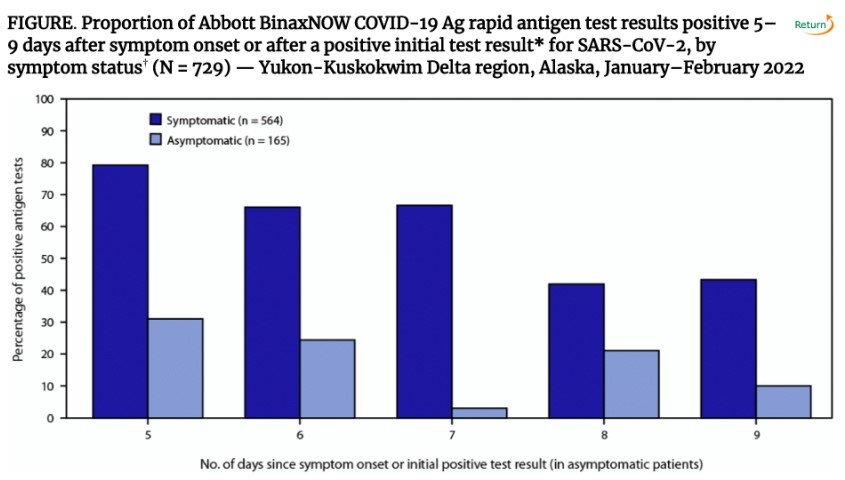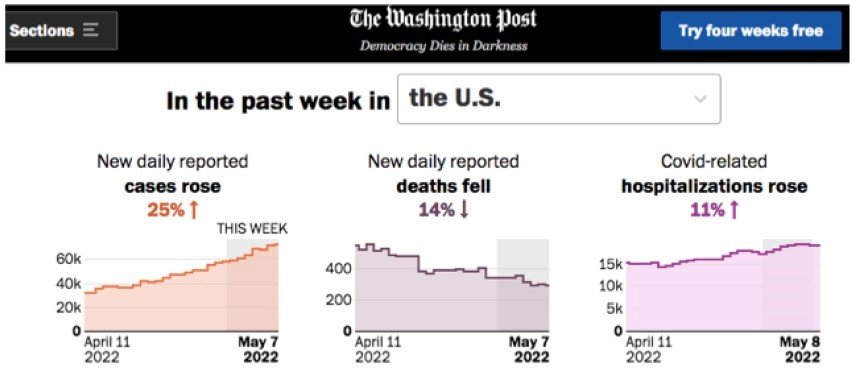Reducing the Risk of Short Gatherings
In our May 10th post, we presented how to reduce the risk of gatherings of people who get together for a limited time on a single day. (May 10th blog) Since then, of course, gatherings continue to happen without enough safeguards, and continue spreading the disease. (Pcmag.com 6/16/2022)
This makes sense, as here in New England for example, we are still in a “stealth surge”, with 5-10 times more covid-19 hospitalizations than the lows of last summer. (“Hospitalizations” is a reliable number these days, as opposed to “cases”, of which only a small fraction ever make it into the official counts.) This means 5-10 times more virus circulating in our communities. Here is the chart for New Hampshire - you can go to CovidActNow to check other states:
Reducing the Risk of Long Gatherings
I have heard of several gatherings where people have joined together for two or three weeks, and already covid-19 has invaded their groups.
It does not have to be inevitable for this to happen, but it does involve more elaborate measures.
A long, long time ago (Nov. 29th post), I posted a video explaining how to gather safely for Thanksgiving. It involved a strict quarantine beforehand, and it took a long time with the variant that was active then. Now, with Omicron, things move much quicker—symptoms (and peak infectiousness) typically occur three days after exposure.
Therefore, it might be possible and practical to keep the virus out of the gathering. All the measures of the May 10th post should be followed, particularly having nearly everything take place outside or under canopies. Then in addition, take one of two approaches:
#1 - Quarantine before gathering: for four or five days prior to arrival, everyone would have no close extensive contact with people outside the immediate family. Do confirming covid-19 testing as close to the end of this period as possible. As you know from prior blog posts, this should be a PCR test (false negatives one time out of six) instead of an antigen test (false negatives one time out of three). (Cidrap.umn.edu 6/15/2022) Or, ideally, two PCR tests 24 hours apart.
#2 - Quarantine after gathering: hold the first four days of the gathering without mixing participants in the same room, inside a building. Rooms used successively, such as bathrooms, need a high rate of exhaust air and a few minutes until the next person enters.
If neither of these is possible, then risk can be reduced (but not eliminated) by having everyone do an antigen test and careful symptoms assessment every morning. Yes, every single morning. (This mimics the successful protocols that have been used by various sports leagues.)
Is All This Worth It?
You probably know of many people in your lives who have gotten covid-19 in the last few weeks, during this stealth surge. And probably nearly all of them have recovered after unpleasant symptoms that didn’t require a hospital visit. Yet, there is still the possibility of a serious outcome, and/or various “long covid” effects.
“The omicron variant is much less likely than delta to cause long COVID, according to the first large-scale study published about the long-term risks posed by omicron. But almost 5% of people who catch omicron still experience fatigue, brain fog, headaches, heart problems or other health issues at least a month after getting infected, the study found. While some researchers found the results reassuring, others say the findings are alarming, given that so many people caught omicron and apparently remain at risk even if they're vaccinated.” NPR.org 6/16/2022
Here are two more articles on long covid:
Thenewdaily.com 6/19/2022
Jpost.com 6/13/2022
As a final word, covid-19 has made us all be risk assessment gamblers. There are about 330 million people in the United States. If current covid-19 rates are extrapolated to a full year, 10 million of us will be hospitalized, and 100,000 of us will die of the disease. There is no right answer here—we can live our lives and take our chances, or we can take prudent steps to avoid the risk. I hope that those with each viewpoint can be tolerant of those who take the other approach.
[The information contained in this article is for educational and informational purposes only and is not intended as health or medical advice. Always consult a physician or other qualified health provider regarding any questions you may have about a medical condition or health objectives.]
Highlights From Past Blogs
June 10 - Returning Safely After Covid
May 31 - Covid Myth-Busting
May 10 - Reduced-Risk Gatherings
April 29 - The Big Meter
April 7 - How to Test
February 25 - One. Million. Deaths.
February 16 - Ventilation Revolution
January 11 - Air Purifiers
January 4 - Masks That Actually Work
December 15 - The Double Risk of Indoor Dining










